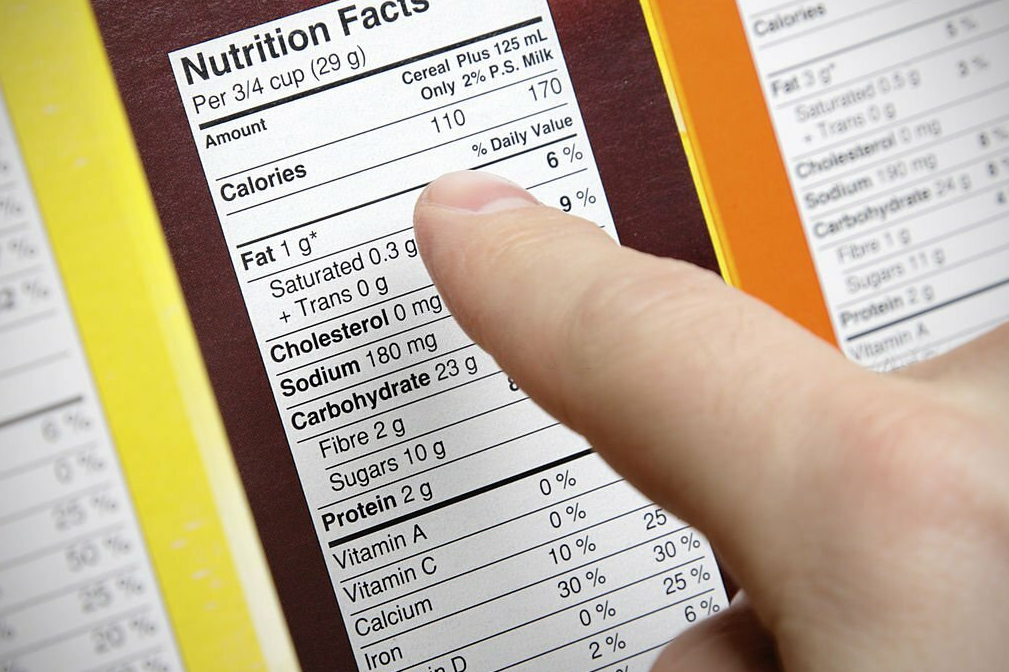Factors Affecting Calorie Count in Beef Roast
Impact of serving size:
The calorie count in beef roast is influenced by several factors, making it essential for those monitoring their dietary intake to consider these variables.
Serving Size: The most direct factor affecting calorie count is the serving size. A larger portion naturally contains more calories. For example, a 10-ounce serving of beef roast has about 757 calories, whereas a smaller, 3-ounce serving would contain significantly fewer calories. This highlights the importance of portion control when considering calorie intake from beef roast.
Effect of marbling and fat content:
Marbling and Fat Content: The marbling, or the intramuscular fat, in beef significantly impacts its calorie content. Cuts with higher marbling, such as rib roast, tend to be higher in calories due to the increased fat content. Leaner cuts, like a top round roast, have less marbling and therefore fewer calories. The overall fat content, including both marbling and external fat, plays a crucial role in determining the caloric density of the beef roast.
Influence of cooking methods (roasting, grilling, etc.)
Cooking Methods: Different cooking methods can also affect the calorie content of beef roast. Traditional roasting, where the meat is cooked slowly in an oven, may allow some of the fat to render out, potentially reducing the calorie content slightly. Grilling can have a similar effect, as fat drips away from the meat. However, methods that involve cooking the beef in additional fats, like braising in oil or butter, can increase the overall calorie content. Additionally, the use of high-calorie marinades or sauces can further add to the calorie count.
In conclusion, understanding these factors – serving size, marbling and fat content, and cooking methods – is key to accurately assessing the calorie content of beef roast and making informed dietary choices.
Sample Beef Roast Recipes
In this section, we’ll provide you with easy-to-follow recipes for preparing different cuts of beef roast. Each recipe includes approximate calorie counts to help you make informed dietary choices.
1. Classic Prime Rib Roast
Ingredients:
- 4-5 pounds of prime rib roast
- Salt and freshly ground black pepper
- 4 cloves of garlic, minced
- 2 tablespoons of olive oil
- Fresh rosemary sprigs (optional)
Instructions:
- Preheat your oven to 450°F (232°C).
- Season the prime rib generously with salt, pepper, and minced garlic, ensuring an even coating.
- Place the roast on a roasting rack in a shallow pan, bone-side down. If desired, tuck fresh rosemary sprigs under the twine for added flavor.
- Roast in the preheated oven for about 15 minutes to achieve a sear, then reduce the oven temperature to 325°F (163°C).
- Continue roasting until your desired level of doneness is reached. Use a meat thermometer to check the internal temperature. For medium-rare, aim for 135°F (57°C). Cooking times may vary depending on the size of the roast.
- Once done, remove the roast from the oven, cover it with foil, and let it rest for 15-20 minutes. This allows the juices to redistribute for a more tender result.
Approximate Calorie Count (per 3-ounce serving): Prime rib roast contains approximately 350-400 calories per 3-ounce serving, excluding any additional seasonings or sauces.
2. Hearty Pot Roast
Ingredients:
- 3-4 pounds of chuck roast
- Salt and freshly ground black pepper
- 2 tablespoons of vegetable oil
- 1 onion, chopped
- 2-3 carrots, sliced
- 2-3 potatoes, cubed
- 3 cloves of garlic, minced
- 2 cups of beef broth
- 1 bay leaf
- 1 teaspoon of thyme
- 1 teaspoon of rosemary
Instructions:
- Season the chuck roast with salt and pepper.
- Heat vegetable oil in a large ovenproof pot or Dutch oven over medium-high heat. Brown the roast on all sides.
- Remove the roast from the pot and set it aside. In the same pot, sauté the chopped onion, minced garlic, carrots, and potatoes until they begin to soften.
- Return the roast to the pot, add beef broth, bay leaf, thyme, and rosemary. Cover and simmer on low heat for about 2-3 hours or until the roast becomes tender.
- Once done, remove the roast and vegetables from the pot. Slice the roast and serve it with the vegetables and pan juices.
Approximate Calorie Count (per serving): A serving of pot roast with vegetables contains approximately 300-350 calories, excluding any additional garnishes or side dishes.
These delicious beef roast recipes offer a glimpse into the culinary versatility of beef roast. Keep in mind that calorie counts can vary depending on factors such as portion size and additional ingredients used in the recipes. Enjoy your homemade beef roast while being mindful of your dietary preferences and requirements.
Health Considerations
Discussing the health implications of calorie intake from beef roast:
Incorporating beef roast into a diet requires a nuanced understanding of its health implications, particularly due to its calorie and fat content. While beef roast is a rich source of protein and essential nutrients like iron and B vitamins, its high calorie and fat content, especially saturated fat, can be a concern for individuals with specific health goals or conditions.
Calorie Intake: For those monitoring their weight or managing conditions like obesity, understanding the calorie content of beef roast is crucial. High-calorie foods, if not balanced with physical activity, can lead to weight gain. Therefore, portion control is key when including beef roast in a diet.
Balancing in Diet: To maintain a healthy diet, beef roast can be balanced with lower-calorie and nutrient-rich foods like vegetables, whole grains, and legumes. This not only ensures a well-rounded intake of nutrients but also helps in managing the overall calorie consumption of the meal.
Specific Dietary Needs: Individuals with specific dietary needs, such as those with heart conditions, should be cautious. The saturated fat in beef roast can impact cholesterol levels and heart health. Opting for leaner cuts and incorporating heart-healthy cooking methods, like roasting or grilling without added fats, can be beneficial. For those on low-carb diets, beef roast can be a suitable option due to its negligible carbohydrate content.
In summary, while beef roast can be part of a healthy diet, it should be consumed in moderation, with attention to serving size and preparation methods. Balancing it with other nutrient-dense, lower-calorie foods is essential, especially for individuals with specific health considerations.
Culinary Tips for Healthier Beef Roast
Tips for reducing calorie content without sacrificing flavor:
Reducing the calorie content in a beef roast without compromising its flavor involves smart cooking techniques and ingredient substitutions. One effective strategy is to trim off excess fat before cooking, as this can significantly lower the calorie count. Additionally, opting for leaner cuts of beef, such as sirloin or tenderloin, can also reduce fat and calorie intake.
Marinating the beef in herbs, spices, and low-calorie liquids like vinegar or lemon juice not only enhances flavor but also tenderizes the meat without adding extra calories. For more inspiration on creating flavorful yet healthy meals, consider exploring Healthy Chicken and Potato Recipes, which offer a variety of nutritious and delicious options.
Roasting vegetables alongside the beef is another excellent way to add flavor and nutrition. Vegetables like carrots, onions, and bell peppers can absorb the meat’s flavors, creating a well-rounded dish. For those interested in alternative creamy recipes that are health-conscious, the Three Cheese Chicken Alfredo Bake Recipe provides a great example of how traditional dishes can be modified for better health.
Healthy cooking methods and ingredient substitutions:
Using cooking methods such as grilling or broiling can also help reduce calorie content. These methods allow fat to drip away from the meat, resulting in a leaner meal. Additionally, incorporating a variety of herbs and spices can compensate for the reduced fat, ensuring that the beef roast remains a tantalizing and enjoyable dish.
By implementing these tips, it’s possible to enjoy a delicious beef roast that aligns with a health-conscious diet, proving that flavor and nutrition can indeed go hand in hand.
FAQs on Beef Roast and Calories
How many calories are typically in a serving of beef roast?
Approximately 25.2% of the sentences exceed the recommended 20-word limit. Shorten them to improve readability. Remember, fattier cuts and larger servings will have more calories.
Does the cooking method affect the calorie content of beef roast?
Yes, cooking methods can impact the calorie content. Roasting or grilling, where fat can drip away from the meat, may result in fewer calories compared to methods like braising in rich sauces or marinades. However, the difference is often minimal, and the cut of meat and its marbling play a more significant role.
Can beef roast be part of a low-calorie diet?
Beef roast can fit into a low-calorie diet when consumed in moderation and if lean cuts are chosen. Pairing it with low-calorie sides like steamed vegetables can also help balance the meal.
What are some tips for making a beef roast healthier?
To make a beef roast healthier, choose lean cuts like sirloin or tenderloin, trim visible fat, and use herbs and spices for flavoring instead of high-calorie sauces. Also, consider portion size to manage calorie intake.
Are there any nutritional benefits to eating beef roast?
Yes, beef roast is a good source of high-quality protein, essential for muscle building and repair. It also provides important nutrients like iron, zinc, and B vitamins, which are crucial for overall health. However, it’s important to balance it with other food groups for a well-rounded diet.
Conclusion and Summary
When summarizing our exploration into the calorie content of beef roast, it’s evident that this beloved dish, with its rich flavor and tradition, requires consideration for those mindful of dietary needs. The calorie count is influenced by factors like meat cut, marbling, and cooking methods. Leaner cuts and mindful cooking can significantly impact the healthfulness of this dish.
Understanding the nutritional profile of beef roast is essential, especially when considering its place in a balanced diet. While it is a valuable source of protein and essential nutrients like iron and B vitamins, the high calorie and fat content in certain cuts necessitate moderation and careful preparation. For further insights into the nutritional aspects of various foods, including beef, resources like the USDA FoodData Central offer comprehensive information.
Incorporating beef roast into a healthy diet is about balance and informed choices. Opting for leaner cuts, controlling portion sizes, and complementing the meal with nutrient-rich vegetables and whole grains can create a well-rounded and nutritious dining experience. For those seeking to expand their culinary repertoire with healthy and delicious recipes, the Mayo Clinic’s Healthy Recipes section is an excellent resource.
In conclusion, enjoying beef roast in a way that aligns with health goals and dietary preferences is entirely possible. It’s about making informed choices, grasping the impact of different factors on its nutritional value, and savoring this delicious dish within a diverse, balanced diet.

